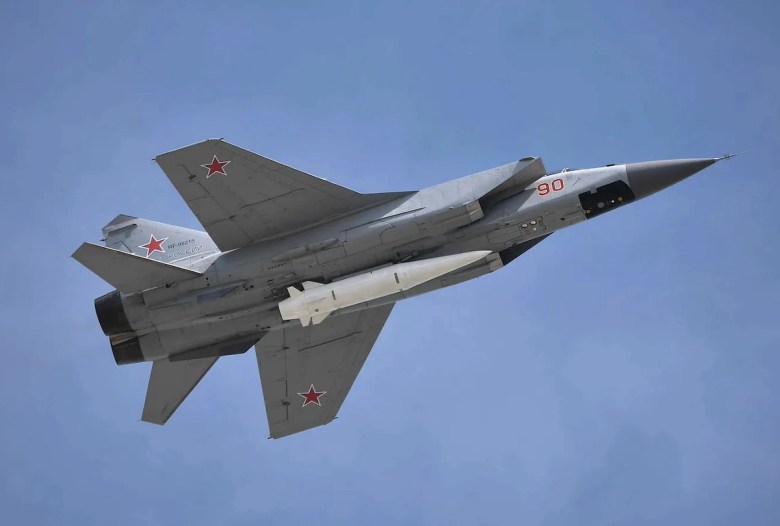The Kiel report has a lot to say about defense industrial output in Russia (which is a lot), by the fact that the Russians are not going to run out of weapons anytime soon and that North Korea now augments supplies in the form of artillery rounds and missiles.
North Korea, it seems, has been grinding out weapons well in excess of anything it can use, and until now, it did not export them. The Russian deal with North Korea sustains the Kim Jong Un dictatorship, of course, by providing cash or the equivalent and underwriting jobs.
All of this helps show, in part, that Germany’s investments in defense are corrupted (I think that is the right word) by excessively expensive hardware.
Even if Germany actually meets the NATO target of 2.1% of GDP for defense spending, what the German army ends up getting is extremely overpriced, not to mention that a lot of it is ending up in Ukraine and only slowly, if at all, replaced on the home front.
Even with adequate spending, what money is spent on boggles the mind. Very little, for example, is going into air defense, something that is vital for Germany’s future defense needs.
Overall, NATO-supplied air defenses have done a mediocre to abysmal job in Ukraine, a harbinger of a deadly future in Europe unless the problem is corrected. An intriguing footnote (page 25) in the report, set in ultra-small type, discusses Ukraine’s ability to shoot down Russian missiles and drones:
Sample interception rates for commonly used Russian missiles in 2024: 50% for the older Kalibr subsonic cruise missiles, 22% for modern subsonic cruise missiles (e.g. Kh-69), 4% for modern ballistic missiles (e.g. Iskander-M), 0.6% for S-300/400 supersonic long-range SAM, and 0.55% for the Kh-22 supersonic anti-ship missile.
Data on interception rates of hypersonic missiles is scarce: Ukraine claims a 25% interception rate for hypersonic Kinzhal and Zircon missiles, but Ukrainian sources also indicate such interceptions require salvo firing all 32 launchers in a US-style Patriot battery to have any chance to shoot down a single hypersonic missile. By comparison, German Patriot batteries have 16 launchers, and Germany has 72 launchers in total.
Take note that interceptor missiles for Patriot are in ultra-short supply. These missiles take a long time to manufacture and gearing up to make them has proven challenging. A shortage of critical components is also bolloxing production lines.
While US defense contractor Lockheed Martin is the main producer, Boeing provides key parts for the seeker the missile uses to strike its target (when it works). Boeing won’t solve that problem, at the earliest, until 2027. Meanwhile, Boeing faces a massive industrial strike and an internal crisis still far from a solution.
But there are big questions about air defenses. The US has sold the Patriot and other systems to Ukraine. The Russians spend a lot of effort destroying them, but even when they function, their intercept rate is below par. Europe has supplied IRIS-T, NSAMS and other systems that, so far as can be determined, are roughly equivalent to the Patriot.
On the whole, Israeli systems are better, but they are not deployed in Ukraine. What is regarded as the top US system for air defense, AEGIS (in the form of AEGIS Ashore), is not in Ukraine. The systems are deployed in Poland and Romania.
Europe has very little in the way of home-deployed air defense (Britain essentially has none). The US is not much better off. Some systems, especially the Ground-Based Mid-Course Interceptor based in Alaska, are a mixed bag.
The Pentagon is now looking for new interceptor missiles that work better than what it has. Despite several tests that were optimized to try and assure success, the 40 or so missiles in inventory only work about half the time.
The future is also concerning as hypersonic weapons arrive on the battlefield, seen in Ukraine in the form of Russia’s Kinzhal and Zircon. Systems like the Patriot or Iris-T or any of the other NATO air defense systems hardly stand a chance against hypersonic attack missiles.
 The Kh-47M2 Kinzhal missile as seen at the 2018 Moscow Victory Day Parades.
The Kh-47M2 Kinzhal missile as seen at the 2018 Moscow Victory Day Parades.
The picture also isn’t pretty when it comes to drones, which are being fired off by the thousands by the Ukrainians and Russians. They are hard to kill and systems like the Russian Lancet drone can destroy modern battle tanks and infantry fighting vehicles.
No one so far, including Israel, has come up with an efficient way to destroy swarms of drones or even some lesser attacks that get through.
Above all, the Kiel report puts a new and important perspective on Europe’s security situation and, by extension, the US, which is pledged by treaty to help defend Europe.
Instead of constantly expanding NATO and creating angst in Europe and Russia, it is time to step back and see if a credible defense of Europe is possible. Right now, judging by the Kiel report, the answer is no.
Stephen Bryen is senior correspondent at Asia Times. He served as staff director of the Near East Subcommittee of the US Senate Foreign Relations Committee and as a deputy undersecretary of defense for policy.
This article was originally published on his Weapons and Strategy Substack, and is republished with permission.
Source link : https://asiatimes.com/2024/10/europe-cant-be-defended-against-russian-attack-report/
Author :
Publish date : 2024-10-24 11:27:00
Copyright for syndicated content belongs to the linked Source.


